Terrariums are like miniature ecosystems that bring life and greenery into your home or office. They require little space, are easy to maintain, and add a unique decorative touch to any room. One of the biggest advantages of terrariums is that you don’t need to be an expert gardener to enjoy them. By choosing the right low-maintenance plants, you can create a thriving mini-garden that brightens your space without demanding too much of your time.
In this guide, we’ll explore five low-maintenance terrarium plants that are perfect for beginners, busy people, or anyone who wants a touch of green without constant upkeep.
Why Choose Low-Maintenance Terrarium Plants?
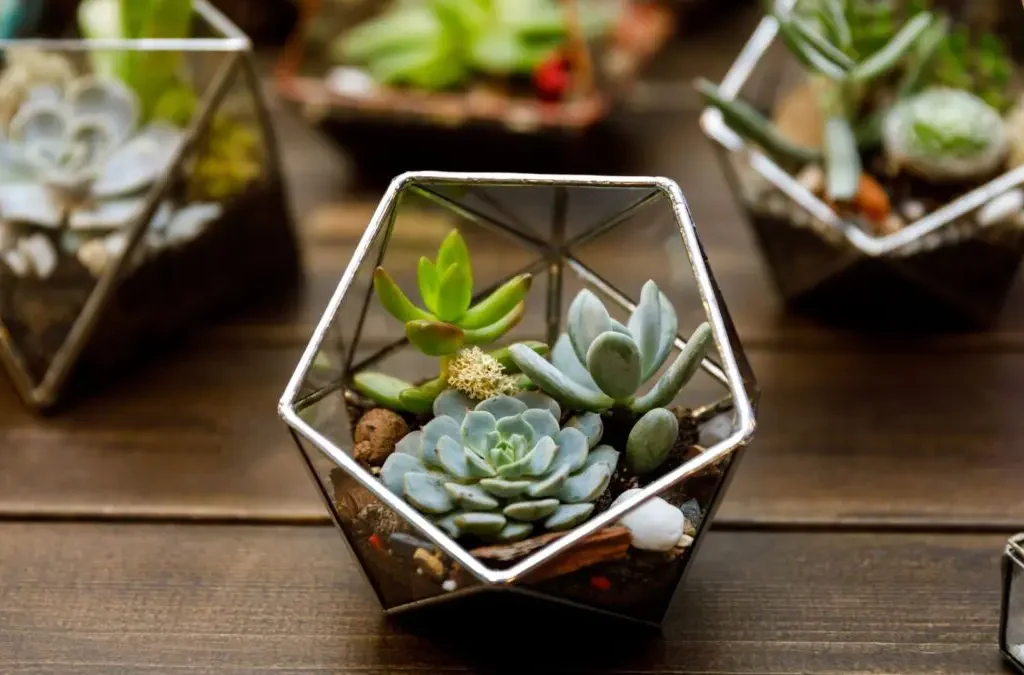
Not all plants thrive in terrariums, as these glass containers create a unique microclimate. They are typically humid and enclosed, which favors plants that love warmth and moisture. However, some plants can also thrive in open terrariums with good airflow.
Low-maintenance terrarium plants are ideal because:
- They don’t require frequent watering.
- They adapt well to indoor environments with minimal sunlight.
- They resist pests and diseases.
- They can thrive with little pruning or fertilizing.
With these benefits in mind, let’s look at five excellent options.
1. Moss (Hypnum or Sheet Moss)
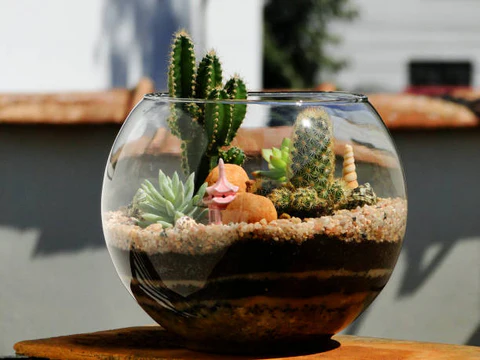
Moss is one of the most popular choices for terrariums. Its lush, carpet-like growth instantly creates a soft, vibrant green base that makes the terrarium look magical.
Why It’s Low-Maintenance:
- Moss thrives in humidity, making it perfect for enclosed terrariums.
- It doesn’t require direct sunlight—indirect light is more than enough.
- It rarely needs watering since terrariums recycle moisture.
Care Tips:
- Keep your moss away from harsh sunlight to prevent drying.
- Mist lightly every few weeks if it looks dry.
- Trim overgrown patches to keep the carpet-like look.
Moss adds a fairy-tale charm and works beautifully as a base layer or standalone feature.
2. Fittonia (Nerve Plant)
Fittonia, also called the nerve plant, is beloved for its colorful, patterned leaves. With veins of pink, red, or white running through deep green foliage, this plant brings vibrancy and contrast to any terrarium.
Why It’s Low-Maintenance:
- It loves high humidity, which terrariums naturally provide.
- It can tolerate low light, making it perfect for indoor spaces.
- It stays compact and doesn’t require much pruning.
Care Tips:
- Keep the soil consistently moist but not soggy.
- Mist the leaves occasionally for extra humidity.
- Place it in filtered light or near a window without direct sun.
Fittonia creates a striking focal point inside glass terrariums, especially when paired with moss or ferns.
3. Ferns (Button Fern or Maidenhair Fern)
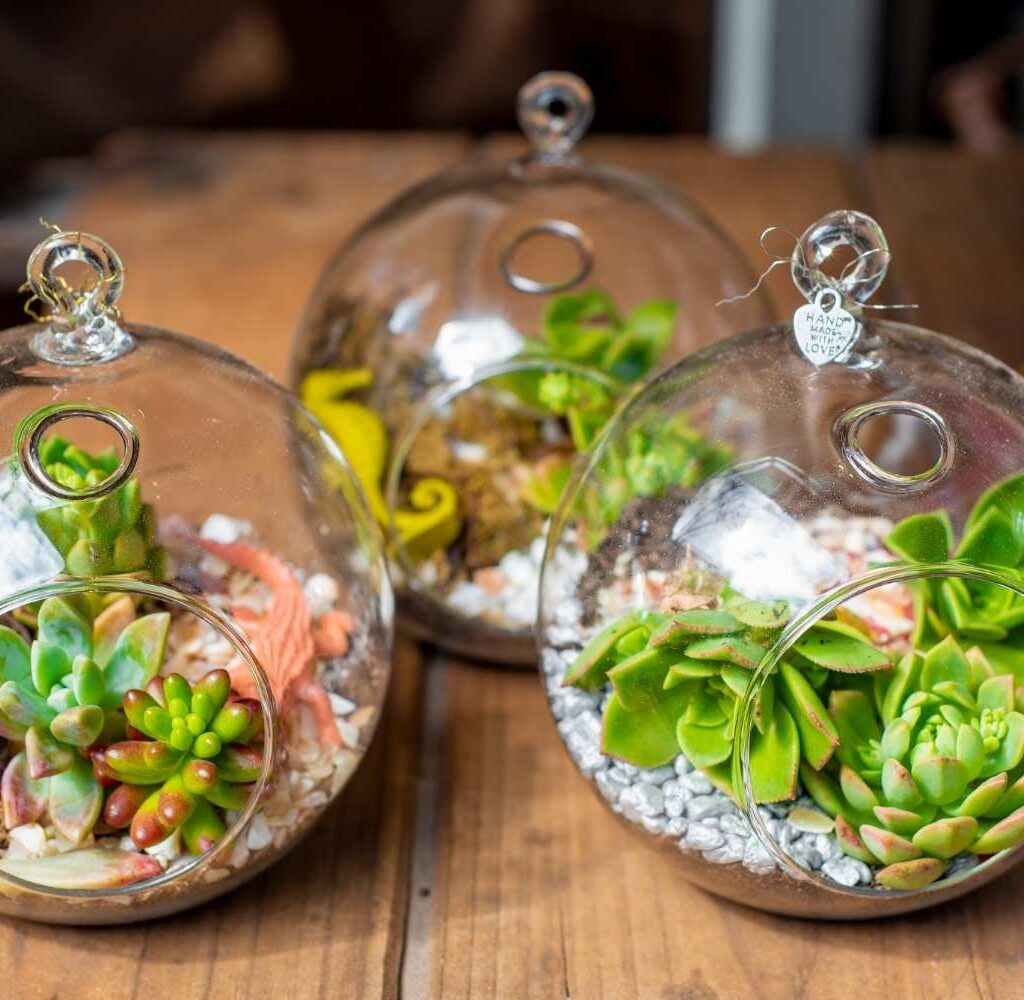
Ferns are timeless terrarium favorites because of their delicate, feathery fronds that bring elegance and freshness. Smaller varieties like the button fern fit perfectly in glass containers.
Why It’s Low-Maintenance:
- Ferns love humidity and consistent moisture.
- They thrive in indirect light, making them ideal for indoors.
- They naturally adapt to terrarium conditions without much fuss.
Care Tips:
- Avoid direct sunlight, as it can scorch the fronds.
- Water when the soil feels slightly dry, but don’t let it dry out completely.
- Trim dead fronds regularly to encourage new growth.
Ferns add lush greenery that balances colorful plants like Fittonia or striking foliage plants.
4. Succulents (Haworthia or Echeveria)
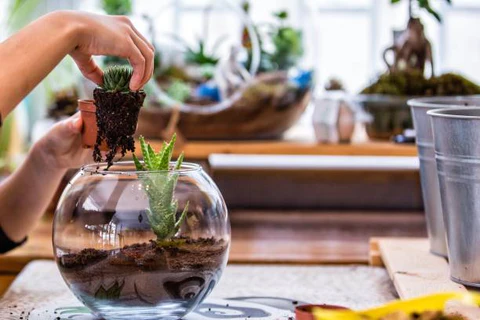
While succulents are not suited for closed terrariums, they thrive beautifully in open terrariums where airflow prevents excess humidity. Their sculptural leaves and unique textures bring a modern, minimalist vibe.
Why It’s Low-Maintenance:
- Succulents need very little water—perfect for forgetful plant owners.
- They tolerate dry indoor air better than tropical plants.
- They grow slowly and stay compact.
Care Tips:
- Use a well-draining soil mix to prevent root rot.
- Place the terrarium in bright, indirect light.
- Water sparingly—once every few weeks is usually enough.
Succulents are a great option if you prefer a sleek, low-humidity terrarium that’s almost maintenance-free.
5. Air Plants (Tillandsia)
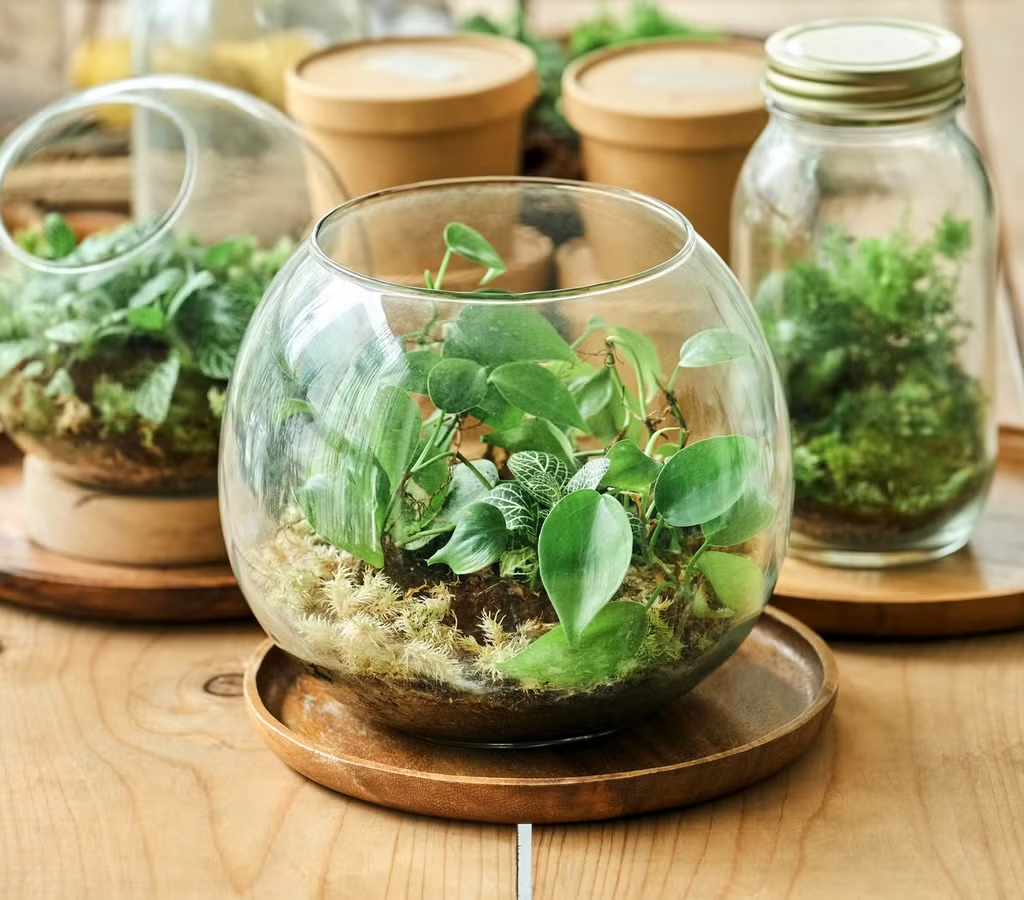
Air plants are one of the easiest and most fascinating terrarium plants. Unlike most plants, they don’t need soil to grow. Instead, they absorb moisture and nutrients through their leaves.
Why It’s Low-Maintenance:
- No soil needed—just place them in your terrarium.
- They thrive on minimal care and adapt well indoors.
- They come in many shapes and sizes, making them versatile.
Care Tips:
- Mist your air plants once or twice a week, or soak them in water for 15–20 minutes once a month.
- Place in bright, indirect light.
- Ensure good airflow, especially in closed terrariums.
Air plants are perfect for creative arrangements since you can nestle them among stones, shells, or driftwood inside the terrarium.
Tips for Keeping Terrarium Plants Healthy
No matter which plants you choose, here are some golden rules for a thriving terrarium:
- Choose the right container: Closed terrariums suit mosses, ferns, and Fittonia, while open terrariums are better for succulents and air plants.
- Avoid overwatering: Terrariums recycle moisture, so a little water goes a long way. Overwatering is the most common mistake.
- Provide proper light: Most terrarium plants prefer indirect light—too much sun can overheat and burn them.
- Prune regularly: Trim dead or yellowing leaves to keep plants looking neat and healthy.
- Balance design: Combine different textures and colors for an eye-catching display.
Conclusion
Terrariums are a wonderful way to bring greenery into your life with minimal effort. By selecting low-maintenance plants like moss, Fittonia, ferns, succulents, and air plants, you can create a miniature ecosystem that thrives on its own while adding beauty to your home or office.
These plants not only brighten your space but also offer a calming, refreshing touch that makes any environment feel more inviting. Whether you’re a beginner gardener or simply a busy individual, these easy-care terrarium plants will keep your little garden looking stunning year-round.
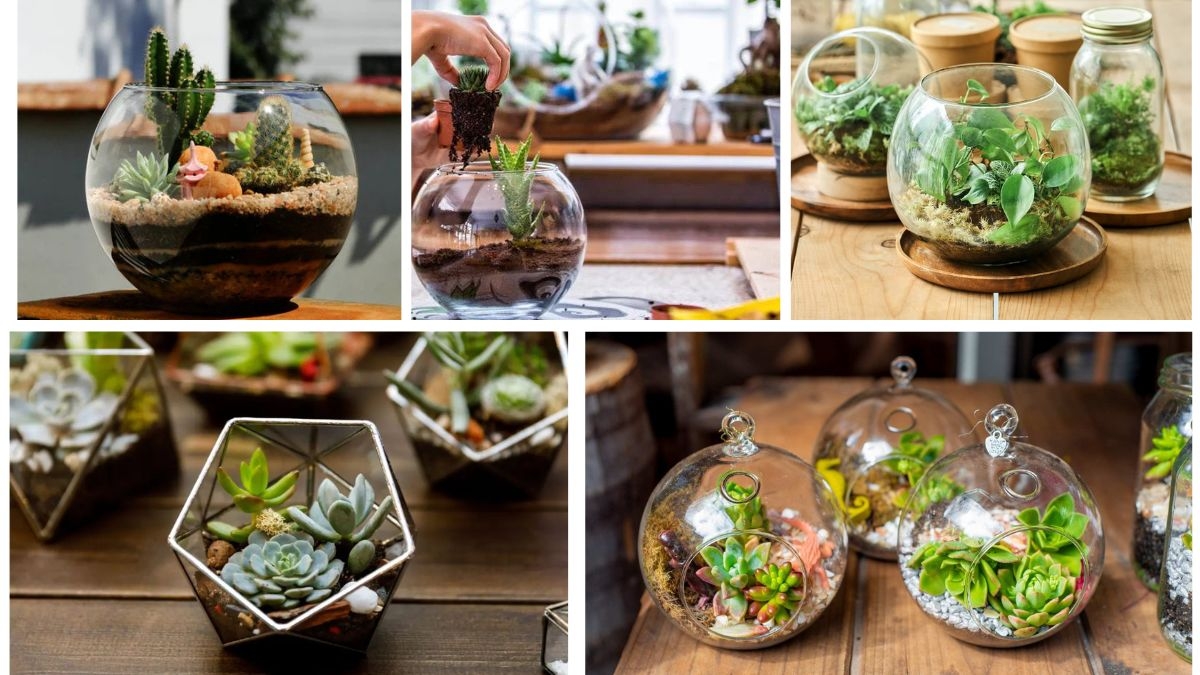


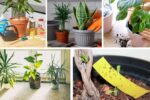

Leave A Comment